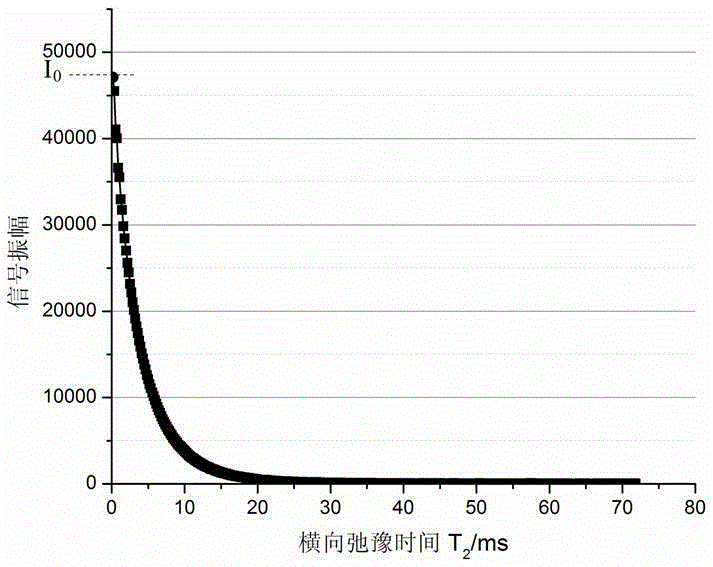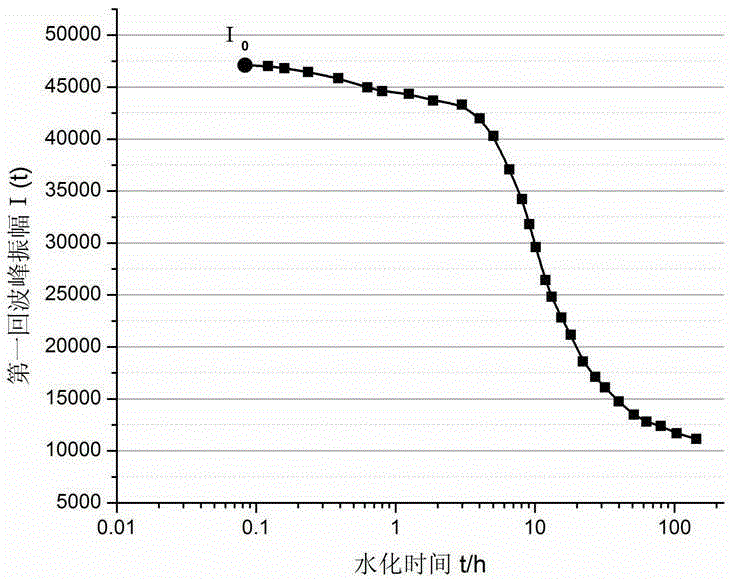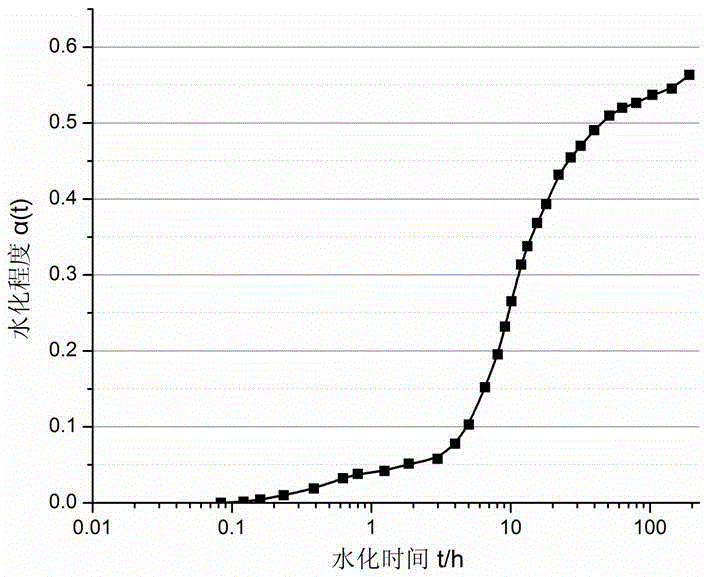Method for representing cement hydration degrees by means of low-field nuclear magnetic resonance technology
A low-field nuclear magnetic resonance and cement hydration technology, applied in the field of building materials, can solve problems such as the inability to achieve continuous testing, and achieve the effect of convenient and fast testing process, less sample consumption, and less interference.
Inactive Publication Date: 2016-01-20
TONGJI UNIV
View PDF4 Cites 15 Cited by
- Summary
- Abstract
- Description
- Claims
- Application Information
AI Technical Summary
Problems solved by technology
[0003] According to literature reports [1] , The commonly used methods to characterize the degree of cement hydration are: the heat of hydration method, which measures the degree of hydration by measuring the heat released during the cement hydration reaction; The determination of the amount of chemically bound water and calcium hydroxide in the hydration reaction product is used to characterize the degree of hydration. It is necessary to stop the hydration and dry heating of the sample. It is a destructive test method and cannot be used for continuous testing of the same sample.
Method used
the structure of the environmentally friendly knitted fabric provided by the present invention; figure 2 Flow chart of the yarn wrapping machine for environmentally friendly knitted fabrics and storage devices; image 3 Is the parameter map of the yarn covering machine
View moreImage
Smart Image Click on the blue labels to locate them in the text.
Smart ImageViewing Examples
Examples
Experimental program
Comparison scheme
Effect test
Embodiment 1
[0037] Example 1: The evolution of the hydration degree during the early 191 hour hydration process of 42.5 ordinary Portland cement with a water-cement ratio of 0.3.
the structure of the environmentally friendly knitted fabric provided by the present invention; figure 2 Flow chart of the yarn wrapping machine for environmentally friendly knitted fabrics and storage devices; image 3 Is the parameter map of the yarn covering machine
Login to View More PUM
 Login to View More
Login to View More Abstract
The invention belongs to the field of building materials, and particularly relates to a method for rapidly and continuously representing cement hydration degrees by means of a low-field nuclear magnetic resonance technology. The method comprises the following steps that 1, slurry is prepared, weighing is conducted, the water content m<0> and the cement content m<c> in the cement slurry are calculated, the slurry is rapidly put in a low-field nuclear magnetic resonance instrument, and test is conducted after system parameters and sampling interval time are set; 2, a CPMG impulse sequence is adopted to collect nuclear magnetic resonance transverse relaxation decay signals at t moments in different hydration time; 3, first echo peak amplitudes I(t) of a decay curve at the t moments in the different hydration time are automatically collected, and an amplitude I<0> of a first collection point is recorded; 4, physical combined water amounts m(t) at the hydration t moments are determined through the specific value of the I(t) to the I<0>, and hydration degrees alpha(t) at the hydration t moments are obtained according to the formula in the specification; 5, a relation curve of the alpha(t) and t is drawn, and the hydration degrees at any hydration t moment can be read. According to the method for rapidly and continuously representing the cement hydration degrees by means of the low-field nuclear magnetic resonance technology, drying or stopping of hydration to samples is not needed, and in-situ detection and continuous monitoring to the cement hydration degrees can be achieved.
Description
technical field [0001] The invention belongs to the field of building materials, and in particular relates to a method for characterizing the hydration degree of cement based on low-field nuclear magnetic resonance technology. Background technique [0002] Cement is one of the largest building materials in the civil construction industry. Cement starts to undergo hydration reaction when water is added, gradually solidifies and hardens, and consolidates sand, stones, etc. together to form finished materials such as concrete. In the field of building materials, the characterization of the hydration degree of cement has always been one of the routine experimental projects for scientific research personnel in the industry and for enterprise R&D personnel to develop new products. Therefore, research and development of new technologies and methods for characterizing cement hydration degree have broad application prospects. [0003] According to literature reports [1] , The comm...
Claims
the structure of the environmentally friendly knitted fabric provided by the present invention; figure 2 Flow chart of the yarn wrapping machine for environmentally friendly knitted fabrics and storage devices; image 3 Is the parameter map of the yarn covering machine
Login to View More Application Information
Patent Timeline
 Login to View More
Login to View More IPC IPC(8): G01N24/08
Inventor 佘安明徐玉敬徐晶姚武杨培强高杨文
Owner TONGJI UNIV
Features
- R&D
- Intellectual Property
- Life Sciences
- Materials
- Tech Scout
Why Patsnap Eureka
- Unparalleled Data Quality
- Higher Quality Content
- 60% Fewer Hallucinations
Social media
Patsnap Eureka Blog
Learn More Browse by: Latest US Patents, China's latest patents, Technical Efficacy Thesaurus, Application Domain, Technology Topic, Popular Technical Reports.
© 2025 PatSnap. All rights reserved.Legal|Privacy policy|Modern Slavery Act Transparency Statement|Sitemap|About US| Contact US: help@patsnap.com



